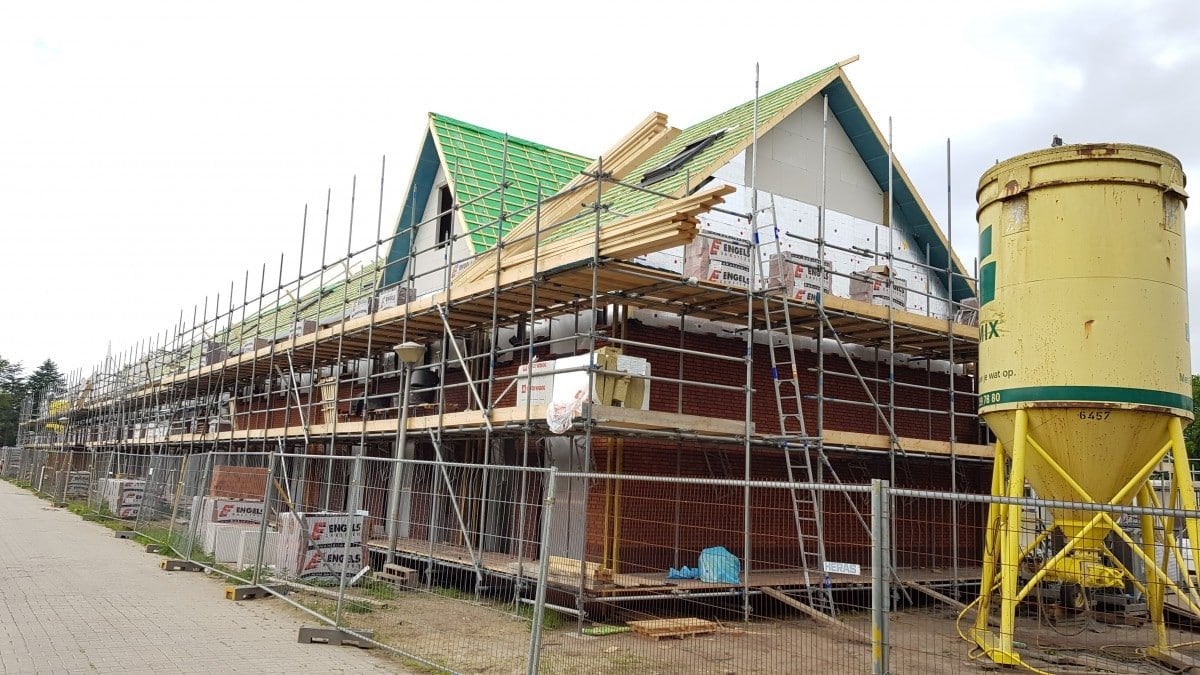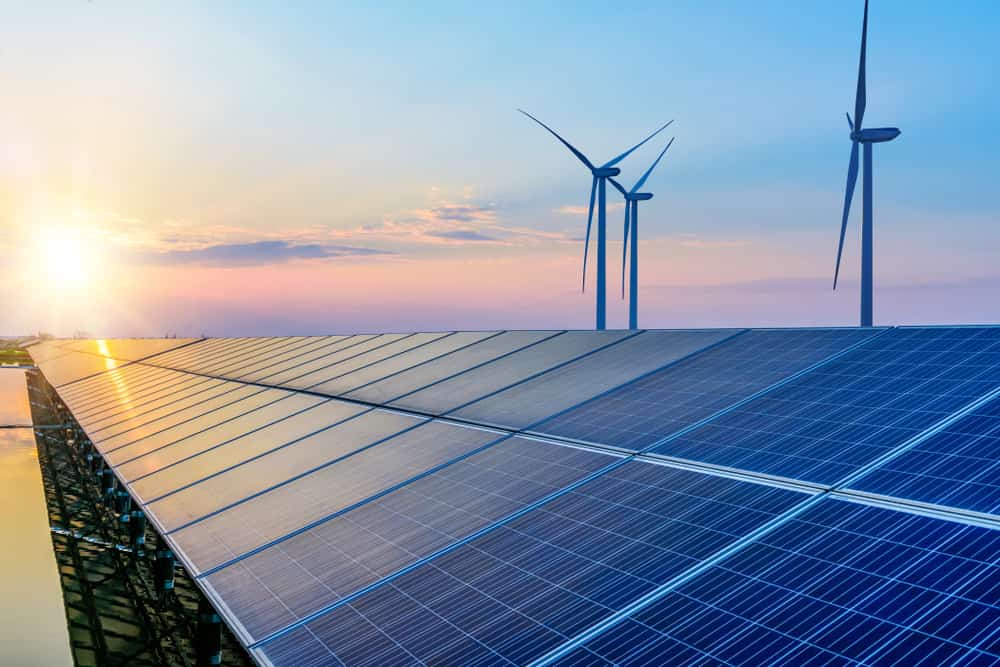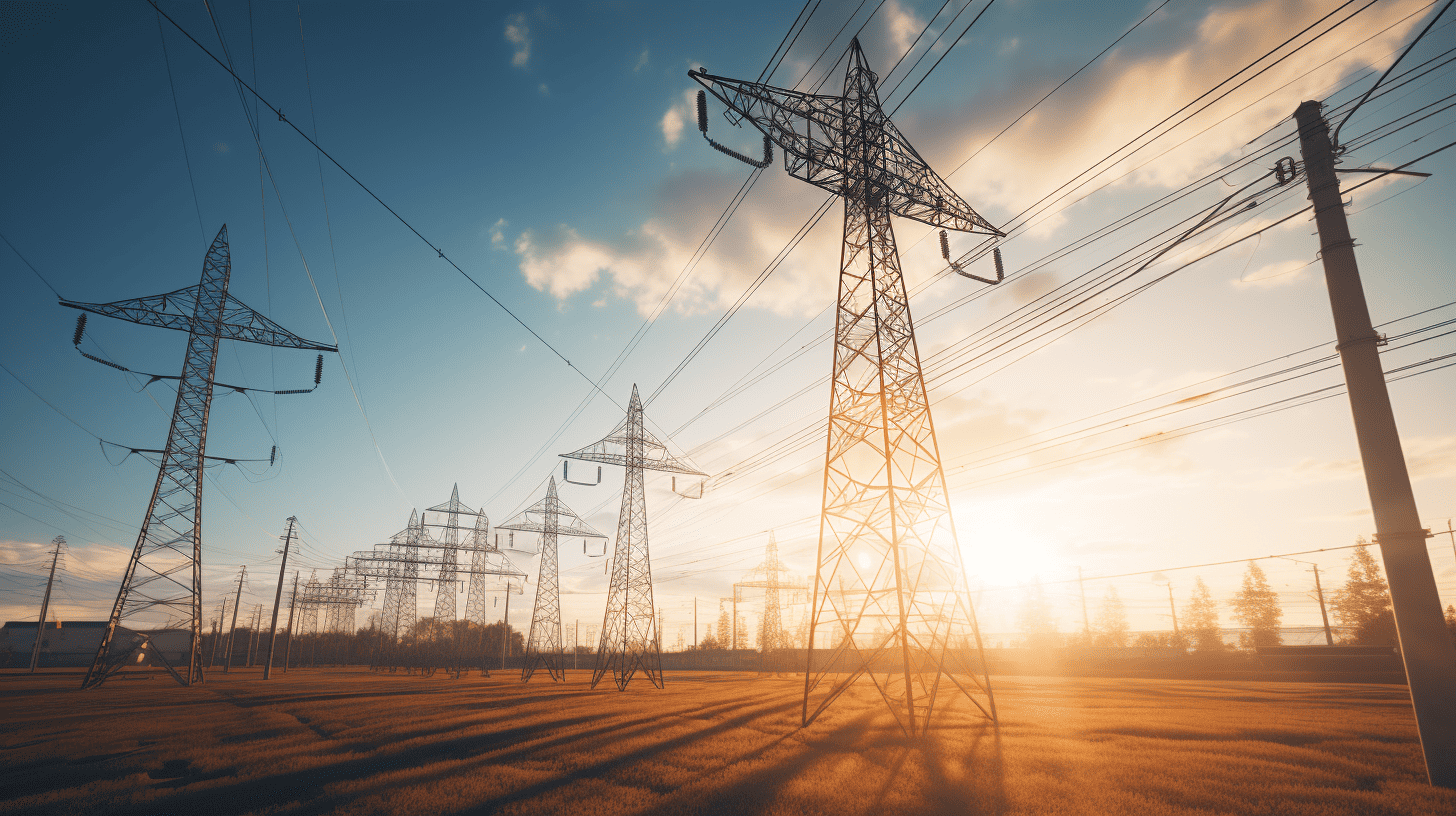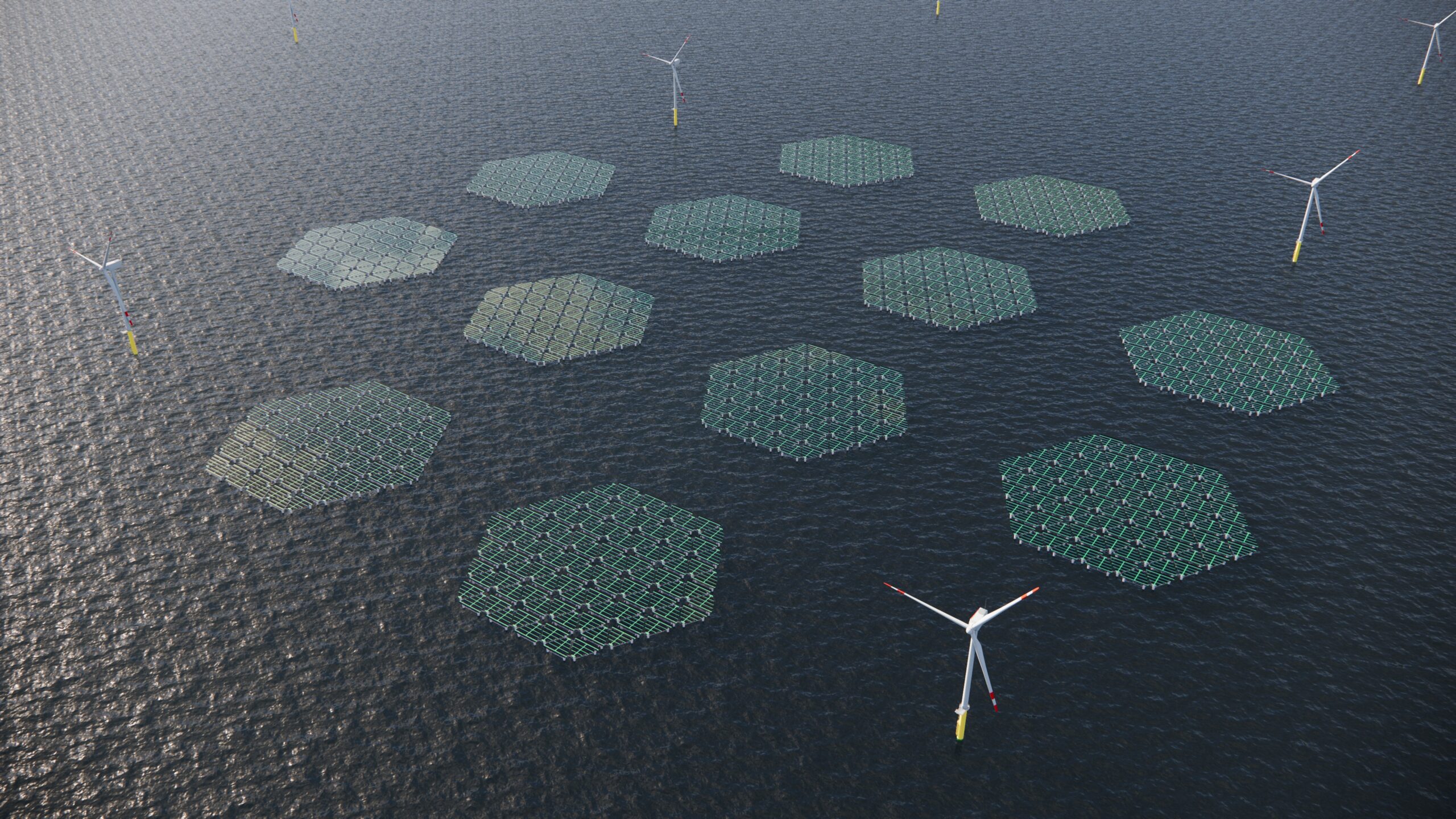
We are the generation that switches from fossil energy to sustainable energy coming from sun, wind and various smaller energy sources. Technically a wonderful story, because for more than a billion years we can harvest hundreds of times more energy without upsetting our ecosystem, and soon it will be even cheaper as well. But because we need a much larger surface area for renewable energy than for fossil energy, renewable energy stands out much more. That’s why we have to think about how we can make renewable energy beautiful. Even more to the point, people shouldn’t see sustainability as something that is forced upon us but as something beneficial. In my opinion, the technicians and administrators who are currently setting the tone in sustainability are completely unaware of this. In this column, I would like to make a few crosses to start the discussion and to show that it can be done in a much nicer and more pleasant way.
Successful example: the electric car
A good example of sustainability that has been made beautiful and desirable is found in electric cars. When I started to make a case for that, the Think City was the state of the art, but although it was a very sustainable city car, few people thought it was beautiful or desirable. Then came the Tesla Roadster sports car and it became a completely different story. With the Tesla Model S and X the electric car grew up and Tesla showed that four-wheel drive and acceleration that a fossil sports car can’t match are relatively easy to achieve. And now there is hard felt jealousy towards people who drive such a beautiful and desirable electric car. Maybe in the future, it will even be a status symbol to have a car that charges itself with solar cells – like the Lightyear. Of course, the price of electric cars will be lower than that of fossil cars within a few years, but what Tesla understands well is that sustainability and cheapness are not enough to trigger mass sales quickly. If you want to achieve that, you have to make your products beautiful and desirable.
At the moment I am building a new house and it strikes me how traditional the building industry still is. My house uses a timber frame construction. Isovlas insulation has superior heat and moisture regulating properties and is pleasant to work with. Western red cedar cladding is beautiful to look at and does not need to be painted, which saves a lot of maintenance. Interior walls of wood can be painted or lacquered and you don’t need to plaster. I also think it’s cool that nature just makes that raw material for you with the help of sunlight and CO2. The more building material you use, the more CO2 you extract from the air. At first, I thought: that will be very expensive, but it’s actually cheaper – also because construction is faster – so why doesn’t everyone do that?
Example near the tipping point: sustainable construction
My roof is 1 large solar panel (they produce 3 times as much as I need for my house and electric car) and because the panels are completely black (without edges) and almost completely lying together it looks beautifully tight. Why do architects still talk to people about old-fashioned and price-increasing roof tiles?
Windows used to be something that took a lot of energy but with good triple glazing you can keep in 10 times as much heat as with single glazing. You also keep out twice as much energy but in the meantime, good triple glazing is energy positive on balance. My architect and contractor pointed out to me that you can apply large glass plates with new sealants that will last for decades relatively cheaply. So I have a huge borderless window on the north (where I have my view) and a large skylight on the roof. It looks really cool and in the winter it gives me extra warmth. Why do I see so little of it?
I love silence. That’s why I’m fed up with the grids next to the windows that allow sound to pass through your thick glass without hindrance. Of course, I also like to be energy efficient. That’s why I’m surprised that so few heat exchangers are used in new houses. They can (if they are properly installed) almost silently keep the air in your rooms fresh and more than 90% of the heat stays in your house.
At first, I was told that a water heat pump (with a pipe in the ground) was very expensive. But if you calculate how much you can save over the lifetime of the house and if you look at how low the mortgage interest rate is at the moment, then it is certainly a money maker for new houses. In addition, you don’t have ugly radiators but a pleasantly heated floor and in the summer (when the solar panels are working overtime) you can cool down without the help of ugly, noisy and energy-consuming air conditioning. What’s not to like?
I tell that not only because I’m proud of my energy-positive house that saves me money, but mainly because I hope that architects and contractors in the construction industry wake up. All those houses with just a few solar panels to meet the weak standard testify to a complete lack of vision and indicate that the construction should be put under more pressure. Furthermore, sustainable building should not only be presented with soulless words such as ‘sensible’ and ‘responsible’ but above all as beautiful and desirable. As far as I’m concerned, the pace of innovation in construction can be increased by a factor of ten!
“Sustainable building should not only be presented with soulless words such as ‘sensible’ and ‘responsible’ but above all as beautiful and desirable”
Next step: a beautiful and desirable energy system
Now we are faced with a more difficult task: how do you make the rest of the energy system attractive and desirable? I know people who like modern windmills and solar parks, but that’s a minority. So what to do?
I recently worked with a number of landscape architects on a model and a report in which we make Brabant switch to 100% sustainable energy. What struck me was how little the small single windmills in villages contribute to the energy supply. If everyone in a village loves it, of course, just keep on building them, but why don’t we do it mainly at sea? At sea we have plenty of space and it is good for marine life that nestles on the foundations of the windmills. And those enormous windmills also fit in well with the enormous scale that you see at sea. We shouldn’t talk all the time about the costs of the windmills at sea, but rather about how wonderfully beautiful and impressive they are. We should be just as proud of those gigantic towers at sea as we are of the Delta Works and the Afsluitdijk!
As far as putting windmills on land is concerned, you should also think of the wind pilots of companies like Kitepower and Ampyx power. They replace the clumsy tower of a traditional windmill with an invisible rope. What you see is a kind of large bird that rotates large slow eights high in the air. That aesthetic aspect of airborne wind energy should be in my opinion front and centre in marketing but it is hardly ever mentioned. (I have written a research proposal in which a psychologist will finally investigate this, if the proposal is accepted.) Instead, they only talk about the fact that it is cheaper, that you can easily take it to inhospitable areas and that you don’t need a foundation for wind at sea. It’s a shame because that doesn’t make it beautiful and desirable. Go to Tesla for advice, I’d say!
For optimal use of solar power, we already talked about the fact that a building should be designed from the beginning with a 100% sunroof (and where possible a solar facade as well) in a way that shows how beautiful that can be. Because the housing stock lasts a long time, we have to start doing the same for existing buildings: don’t put a few panels on it, but think about how you can turn the entire roof surface into a nice solar panel. As long as you would want to build solar fields, you could also do it a lot better. You can make panels that move with the sun (a bit like sunflowers) and with a bit of creativity, you can combine it with agriculture. As far as I’m concerned, it’s more beautiful than corn growing three metres high. And don’t forget, solar panels are also possible at sea.
Making new mobility desirable
That brings me back to the car. Because although the electric car is already halving its CO2 emissions and could reduce them by a factor of ten in the future, the electric car in fact is just as old-fashioned as the long-playing record. Recently I started working with Geert Kloppenburg and Walter Dresscher on smart mobility in the city and I was shocked. It seems to me that the industry is almost exclusively concerned with raking in as many billions as possible for more asphalt and more rail. Good models that look at door-to-door traffic are hardly used. Introducing autonomous trains is relatively easy, but because the sector is so slow and the unions don’t like it, it will take another 20 years before we can send more trains on the existing track. The possibilities of a high-frequency bus (‘metro over asphalt’) are almost completely ignored. We are ignoring ways to encourage cycling and car-sharing. City design has hardly any vision of innovative transport. All in all, we’re putting a huge amount of money into solutions that we know won’t work, and we’ll continue to do so for the time being: completely unacceptable.
“We’re putting a huge amount of money into solutions that we know won’t work, and we’ll continue to do so for the time being: completely unacceptable.”
I think the core of the problem is that we don’t yet understand how much nicer and more desirable innovative transport can be. We should show how much more beautiful, spacious, green, quiet, healthy and safe the city will be if we do more cycling and car-sharing. We should present car-sharing (‘Spotify your car’) as more luxurious than your own car. Like: of course, you can buy your own long-playing records and always clean them well and play them with a lot of hassle, but streaming offers much more logic, isn’t it? Then you will always have the possibility to drive the ideal car for your trip within a few minutes, without the hump, costs and unpleasant neighbourhood that comes with your own car. There are cute and funny movies but I have yet to see the first slick movie in which that future is sold to us as beautiful and desirable.
https://youtu.be/tcGENBzFDrg
All in all, I know from my profession that rapid sustainability is badly needed and that in the end, it will be much cheaper. But if we don’t manage to make it more beautiful and desirable, we will create unnecessary resistance and delays. This is unfortunate and unnecessary because I am convinced that the sustainable story can be presented as a global adventure that brings people together, that makes our world more beautiful and what we do not do because we have to – but because we want to.
About this column:
In a weekly column, alternately written by Eveline van Zeeland, Jan Wouters, Katleen Gabriels, Maarten Steinbuch, Mary Fiers, Carlo van de Weijer, Lucien Engelen, Peter de Kock, Tessie Hartjes and Auke Hoekstra, Innovation Origins tries to find out what the future will look like. These columnists, occasionally supplemented with guest bloggers, are all working in their own way on solutions for the problems of our time. So tomorrow will be good. Here are all the previous episodes.








